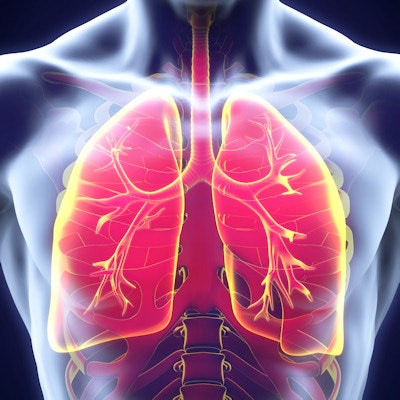
In its annual report on lung cancer in the U.S., the American Lung Association (ALA) on November 13 highlighted the benefits of CT lung screening and its contribution to a 26% improvement in the five-year survival rate of lung cancer patients over the past decade.
Lung cancer remains the leading cause of cancer-related deaths in the U.S., although lung cancer incidence has decreased and survival rates have improved over the past 10 years.
For the ALA's 2019 report, researchers from the association investigated various lung cancer metrics -- including incidence, survival, surgical treatment, and screening -- to better understand the burden of the disease and discover the best methods for addressing it. The analysis examined data from several sources: the 2018 North American Association of Central Cancer Registries, the 2011 to 2015 Centers for Disease Control and Prevention Wonder online database, and the American College of Radiology 2018 Lung Cancer Screening Registry.
On a national level, the group found that lung cancer incidence was 59.6 per 100,000 individuals. The five-year survival rate was 21.7%, up 26% compared with a survival rate of 17.2% a decade ago. Lung cancer's relatively low survival rate compared with other common cancers largely stems from the failure to detect the disease in its early stages, when it is more likely to be curable, the ALA noted.
The researchers discovered that only 21.5% of all lung cancer cases were diagnosed in the early stages of the disease, when the five-year survival rate is nearly 60%. Conversely, the proportion of late-stage diagnoses was 48.5%, for which the survival rate is roughly 6%.
The group also determined that the burden of lung cancer, as well as individuals' exposure to risk factors and accessibility of screening, varies from state to state. As such, the ALA report provides an analysis of key lung cancer indicators in each state, allowing for a state-by-state comparison.
For example, lung cancer incidence ranged as widely as 27.1 per 100,000 individuals in Utah to 92.6 in Kentucky, and the five-year survival rate was as low as 16.8% in Alabama and as high as 26.4% in Connecticut.
"Lung cancer rates for every measure vary significantly by state," the ALA wrote. "And every state can do more to defeat lung cancer, such as increasing the rate of screening among those at high risk."
Despite the clear advantages of early cancer detection, only 4.2% of eligible individuals participated in CT lung screening in 2018 following criteria established by the U.S. Preventive Services Task Force. The association attributed the low screening rates to a combination of factors, including limited access to screening facilities, low awareness and knowledge among participants and providers, and disparities in insurance coverage.
Among healthcare payers, Medicaid programs are some of the only ones not mandated to cover CT lung screening. Even where screening is covered, the programs occasionally use different eligibility criteria and charge individuals for their scans. As of January 2019, only 31 states offered Medicaid coverage of CT lung screening. Screening participation rates were 4.8% in those states, compared with 2.6% in the rest of the country.
The ALA urged state Medicaid programs to cover CT lung screening for all fee-for-service and managed care plans in order to eliminate financial and administrative barriers restricting access to the exam. Screening all currently eligible high-risk smokers in the U.S. could save close to 48,000 lives, the association noted.
"This year's report supports both the lifesaving potential of [CT] lung cancer screening, which finds the disease at an early stage when it's more curable, and the importance of advancements in lung cancer research. ... The report also serves as both a guidepost and rallying call [for] policymakers, researchers, healthcare practitioners, as well as parents, caregivers and others committed to ending lung cancer," the ALA concluded.




















